Hi! It’s konkaz (@konkazuk).
The book I’m introducing this time is titled “REWILDING THE SEA“, written by Charles Clover, an environmental journalist and author from the UK.
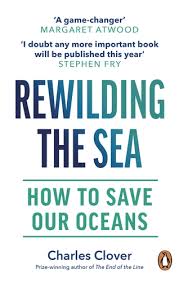
Day after day, fish dishes, sushi, and sashimi are endlessly displayed at supermarkets.
I don’t think many people generally stop to consider what’s happening in the ocean when they buy or eat these.
However…,
I imagine there are quite a few people, especially those familiar with Japanese cuisine, enjoying tasty fish dishes as if it’s absolutely normal.
But, in reality, the sushi or sashimi you are picking up might no longer be available in the very near future.
If you don’t want fish dishes to disappear from your table, I urge you to read Charles Clover’s book and learn what’s really happening in our oceans!
There are almost no fish left in the ocean!!!
Who is Charles Clover?

So, let’s start with an introduction to the author.
Charles began his career as an environment editor at the ‘Daily Telegraph’ and later joined the ‘Sunday Times’.
He has been recognised as the best environmental journalist three times.
Actually, prior to this book, he had written “The End of the Line“ – (How Overfishing is Changing the World and What We Eat), and a documentary film based on it was made in 2009.
Together with those involved in the production of this film, he later founded the Blue Marine Foundation, and he continues to fight for marine conservation and sustainable fisheries to this day.
Overfishing
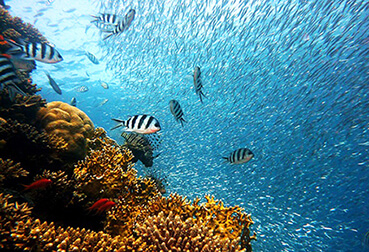
To begin with, the definition of “overfishing” is:
The practice of harvesting fish at a speed that exceeds their natural reproduction rate, leading to population depletion.
In simpler terms, it’s…
“catching fish more quickly than they can replenish naturally“.
When the minimum population needed for reproduction can no longer be sustained, it will disrupt the balance of the ecosystem and could even alter the entire food chain.
At the time Charles started his investigation into marine ecosystems, both the UK and EU fisheries ministers were completely unaware of the actual state of affairs. Although there were legal quotas for fishing, these limits were far above the scientifically determined levels necessary for population recovery.

While awareness of climate change has been growing, it’s surprising that people have only recently begun to pay attention to what is happening in the oceans.
Bottom trawling
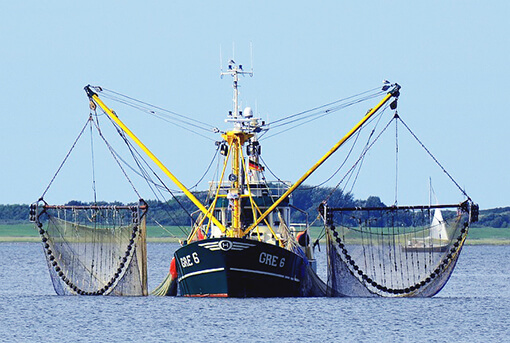
There are various fishing methods, but among them, bottom trawling causes “catastrophic damage” to the ocean.
Although bottom trawling has existed for a long time, technological progress has transformed it into an almost inescapable method for fish.
It now involves:
🔹Using drones to locate fish schools
🔹Employing GPS and satellite tracking to map regions and migration routes where fish are likely to gather
🔹Applying beam trawling, which uses a long metal frame with weights at both ends to stabilize the net as it drags along the seabed
Charles explains trawling in the world’s oceans by using a land-based analogy in his book, making it easier for the general public to understand what happens in the world’s oceans every day…
Imagine what it would be like if huge machines dragged a beam trawl across the savannahs of Africa.
These contraptions would scoop up everything in their way: predators, such as lions and cheetahs, lumbering herbivores, such as rhinos and elephants, herds of impalas and wildebeest, family groups of warthog and wild dog. At the same time, the rolling beam would smash and flatten obstructions, flushing creatures into the approaching filaments, leaving behind a bedraggled landscape resembling a harrowed field.
There are places where this happens several times a day, and it’s absolutely devastating!

As expected, despite using the latest technologies mentioned earlier, the fish population in the ocean has dwindled so much that the current catch is only 6% of what it was 130 years ago.
*By the way, I found a website called “MONGABAY” that covers topics about trawling. For those interested, please have a look!
Oyster
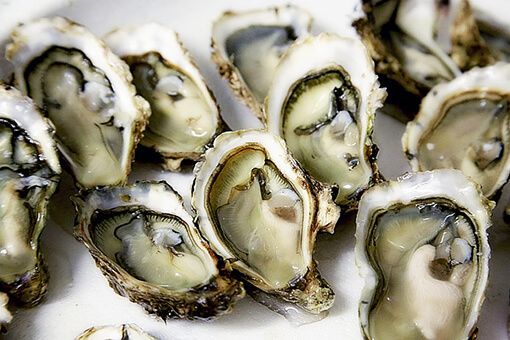
There are many stories in this book, but the oyster section resonated with me the most, so I’d like to highlight it here.
Here’s some bad news to begin with:
Over the past millennium, it is estimated that over 90 per cent of the oyster beds that once existed in the world have gone.
It is believed that the primary cause is overharvesting, bottom trawler fishing, and the destruction of habitats by dredgers (as shown in the photo below).
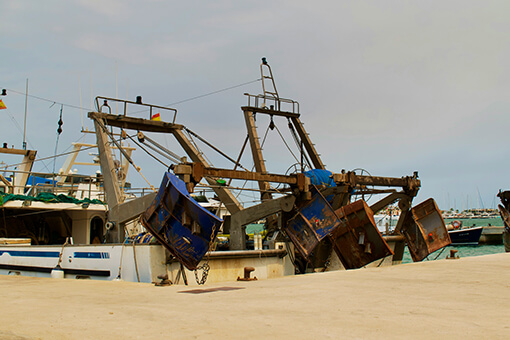
These oysters, in fact, are regarded as one of the
“keystone species“,
playing an essential role in the ecosystem. Their existence helps keep the balance of many other species and the ecosystem as a whole.

On land, gray wolves are known to be a keystone species.
Oysters purify the water as they feed.
According to the book, a single adult oyster can filter up to an astonishing 140 liters of water per day.
As a result, various organisms gather in areas where oysters live.
If oysters are removed, the ability to filter nutrients from the water is lost, leading to an overgrowth of algae and worsening environmental conditions.
When Charles and his team realised that the Solent Strait, which separates the Isle of Wight from mainland England, was dying due to excessive algae, they decided to restore the area by reintroducing oysters, and they put their plan into action.
The environmental dilemma of the Maldives islands
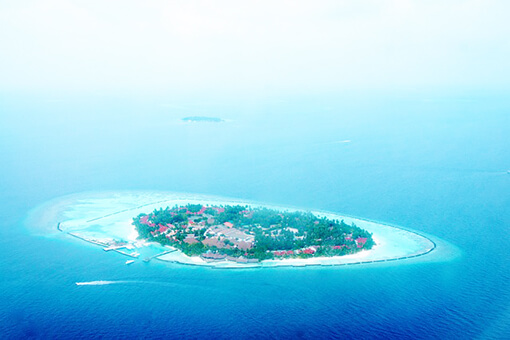
The above picture is of the Maldives, a series of atolls located in the Indian Ocean.
An atoll [ætɒl] is a landform formed by coral reefs in a circular or semi-circular shape, which includes both inhabited and uninhabited islands.
Coral reefs play the role of a “habitat” for numerous marine creatures, enabling a vast range of species to coexist. Like the oysters mentioned earlier, they are also considered “keystone species.
…but these coral reefs are also in a critical condition.
The case of the Maldives archipelago is particularly unique, so I’ll highlight it here.
Fishermen in the Maldives do not use bottom trawling to catch tuna; instead, they adopt a method of catching fish one by one using fishing rods and lines.
This fishing method helps prevent overfishing and is much more eco-friendly compared to large-scale industrial fishing, but…
it does require bait to catch the fish.
Fish living in coral reefs, called “reef fish“, are captured in large numbers as bait for fishing techniques, but are also harvested for food by local residents and tourists. This decline in reef fish populations has become a serious issue.
Reef fish play a key role in maintaining coral health by feeding on plankton that thrive near coral reefs, creating a mutually beneficial relationship between the two. However, with the decline in reef fish populations and the effects of climate change, coral bleaching has intensified.

By not using bottom trawling to catch large fish such as tuna, overfishing is being prevented, but ironically, the overfishing of their food sources is contributing to the death of coral reefs.
Once they go to distant waters, they just do whatever they want!
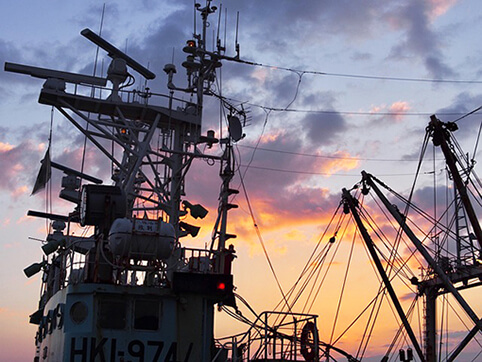
Nearly half of the fish caught globally is attributed to China, the EU, Japan, Russia, Taiwan, South Korea, and the United States.
However, China‘s and the EU‘s fishing activities, in particular, have faced harsh criticism.
The EU, with Spanish fishing vessels in particular, has been accused of violating the catch limits agreed upon in fishing treaties with other countries or regions. They are notorious for heavily exploiting waters far from their own territory, such as the Indian Ocean.
This has led to a decline in local fish stocks, causing significant harm to small-scale fishers in neighboring countries and to the marine ecosystem.
China’s case is even more extreme.
Their distant-water fishing fleet has grown out of control, reaching four times the size officially desired by the Chinese government.
Back in 2014, UN officials estimated that China’s distant-water fishing fleet numbered 3,432 vessels—almost 14 times larger than the EU’s fleet. But a 2020 report by the London-based Overseas Development Institute revealed a shocking reality….
China’s fleet had grown to at least 12,490 vessels, with an additional 17,000capable of operating beyond Chinese waters.
(By the way, almost all of these are trawlers!)
In addition, once they acquire licenses to fish in other countries, they establish factories in those nations and harvest fish, including those essential for the livelihoods of local communities. They then process the fish into fish oil and fishmeal (used for fertilizers and animal feed) and export these products to their own country or abroad.
These kinds of activities are contributing to the collapse of local economies.
To wrap up…
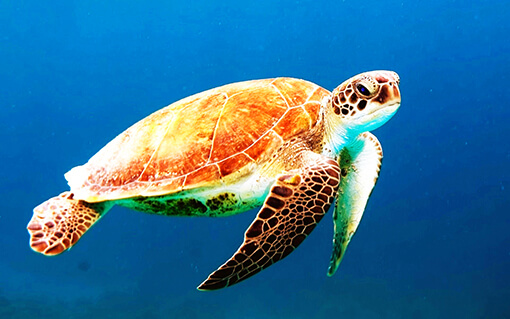
So, our oceans are currently in an absolutely tragic state.
Charles passionately insists that, in order to restore our devastated oceans, we must establish as many
“No Take Zones”
as possible around the world.
What this suggests is that, to revive the ocean, humans must take a step back and allow nature to take control of the seas.
Recently, it has been estimated that the amount of greenhouse gases emitted by bottom trawling fisheries is equivalent to that of the aviation industry, calling for urgent action.
If we are to restore the oceans and regain their abundance for the benefit of all humanity, every one of us living on this planet must take part in this challenge.
To conclude, I would like to remind you once more…
the ocean has nearly no fish remaining!!!
Thank you for reading until the very end.
After “give and take”, it’s “give” again.
Until next time.
konkaz
*You can read this blog post in Japanese from the link below.
👉 海の再生と未来:『Rewilding the Sea』で学ぶ海洋保護の重要性

